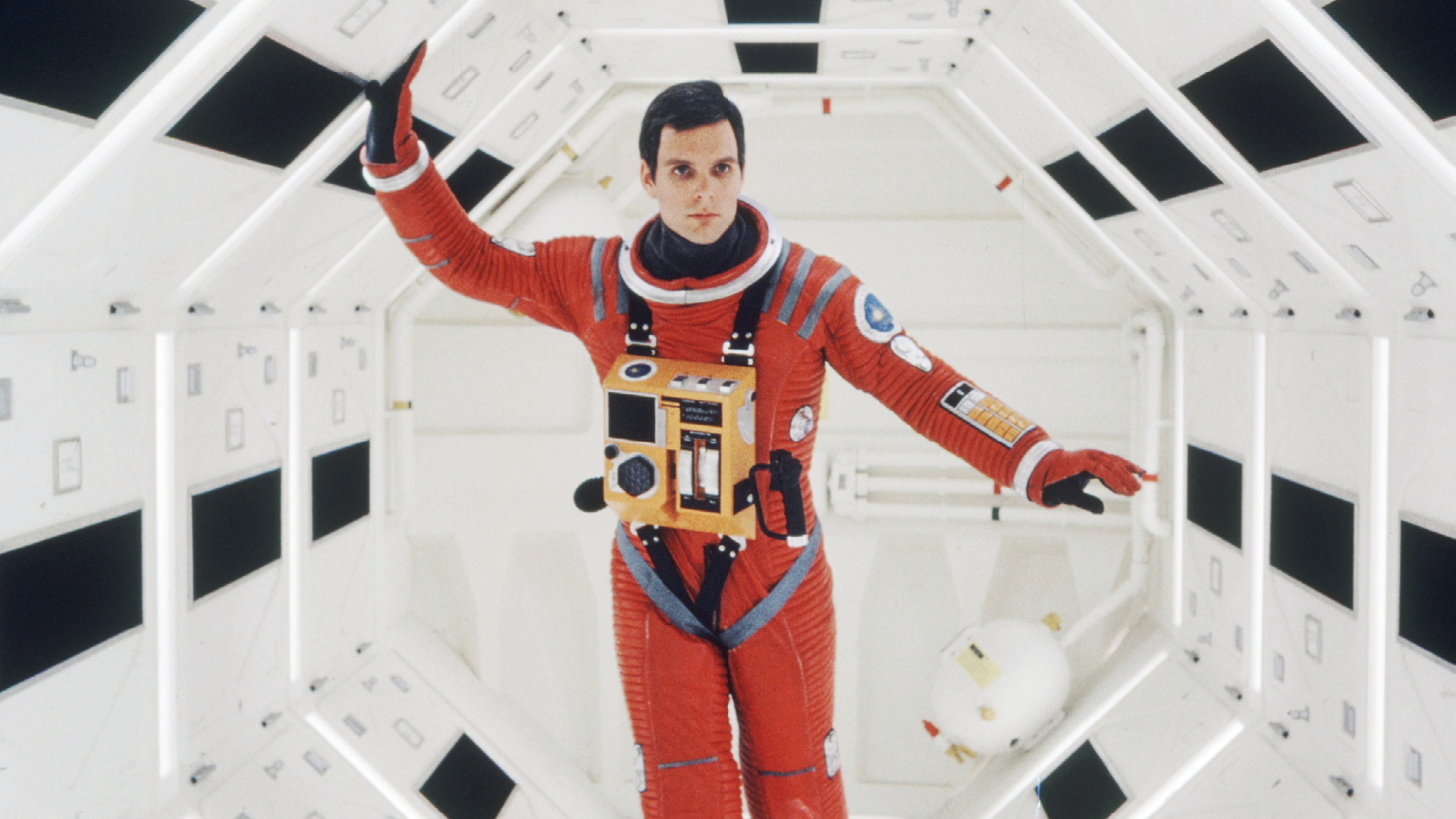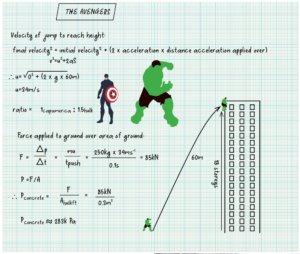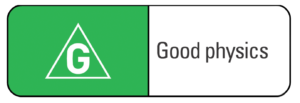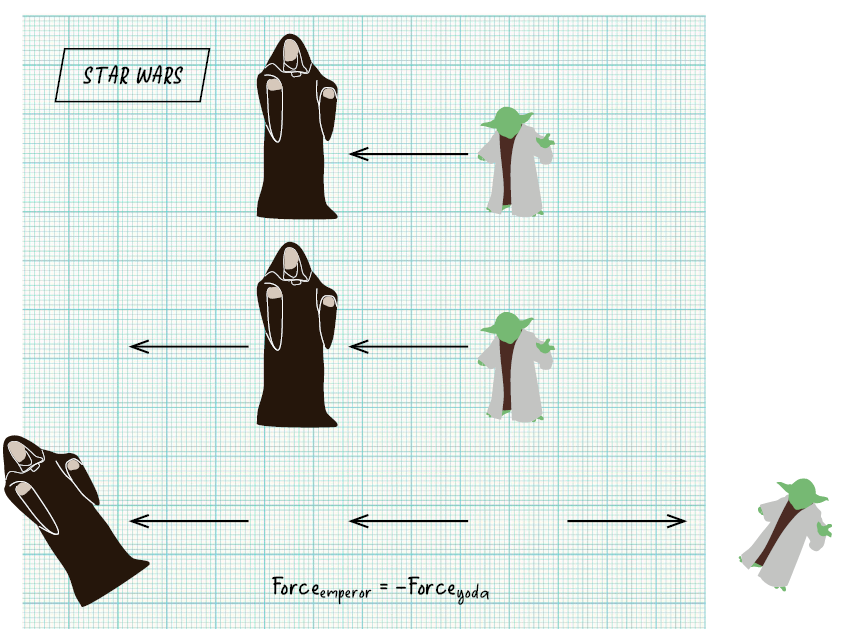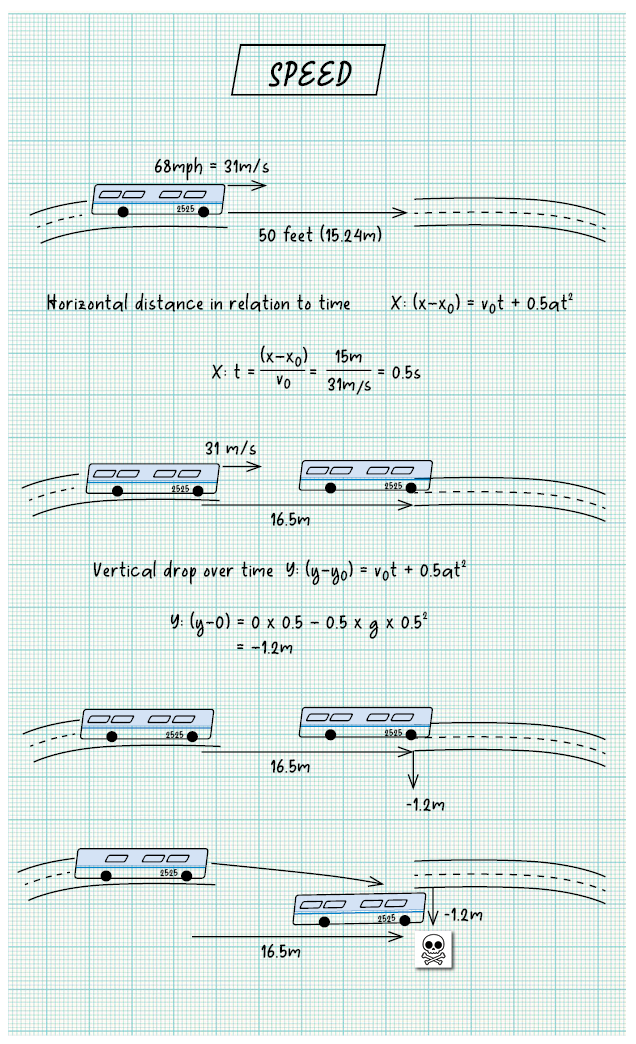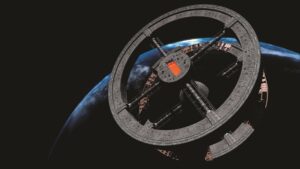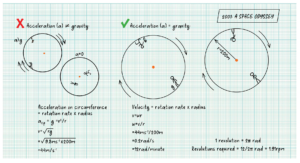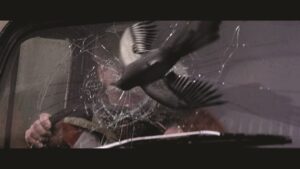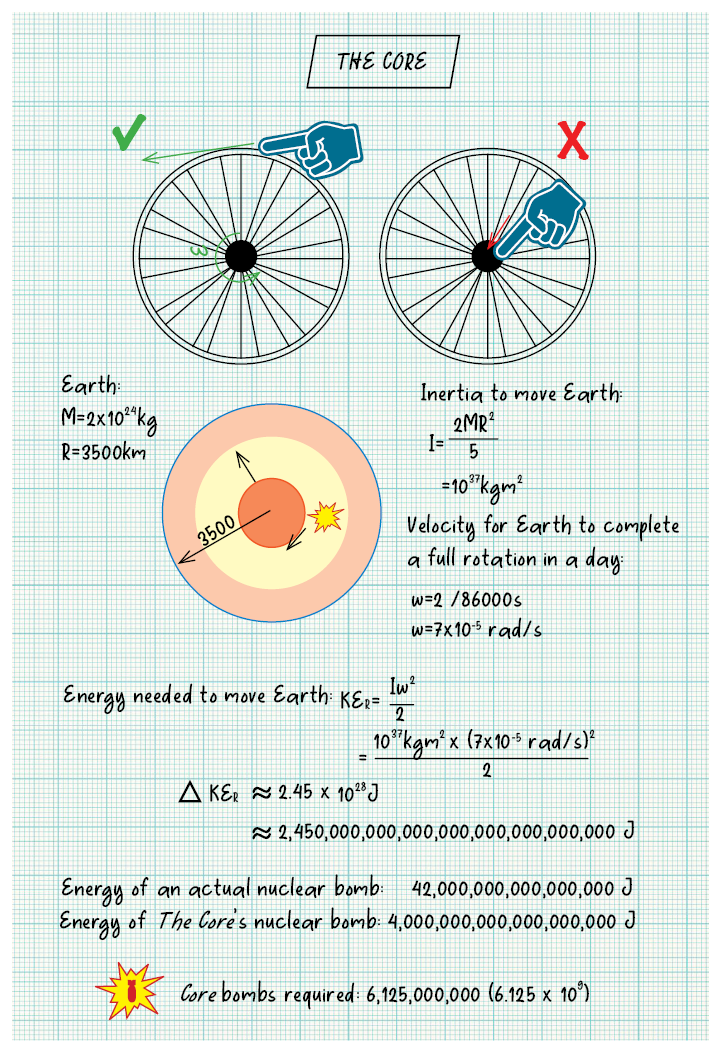We all suspend a certain amount of disbelief when we immerse ourselves in a blockbuster movie. But for a geek like astrophysicist Alan Duffy, it’s particularly annoying how the elegance and beauty of physics is routinely spurned by Hollywood filmmakers trying to wow their audiences.
This extended resource covers many areas of the Physics curriculum, including forces, Newton’s third law, gravity and momentum. It is best suited for Year 7, 10 and Senior Secondary Physics and STEM learners.
Word Count: approx. 3300
I’m a textbook geek – let’s be honest. Check out my credentials: professional astronomer. I grew up with the science fiction greats: Arthur C. Clarke, Star Trek, and more. In my day job I create baby universes on supercomputers, and lead teams designing missions to mine the Moon. So if there’s an opportunity to explain science that I deeply care about, it is a dream come true, a perfect overlapping of Venn diagrams.
As a card-carrying nerd, you might think I would shy away from these opportunities, but I reckon science is something worth sharing. And for potentially hundreds of millions of people, the primary science they are exposed to is what they view in movies. Hollywood is their teacher of space, of our planet and its place in the cosmos, and – my particular passion – of physics.
Does it matter that Hollywood gets the science wrong so often? Of course it does! Science is fascinating enough without the need to distort it and defy it. To this end, I’ve developed a ratings system to assess the credibility of some of my favourite science-fiction films, with an action blockbuster or two thrown in. And in all of the following examples, there’s something that we can learn by taking seriously the worlds they create, and their application of physics.
Forces for courses
Let’s start off with perhaps the largest cinematic franchise in history and one of my favourite films, The Avengers. One of the founding members of the Avengers is the Hulk, a figure associated with mindboggling acts of strength.
Here’s what I’m thinking when I watch the Hulk in action: how might his superhuman force be applied on very human scales? As he concentrates his enormous power – in physics parlance, an ultrahigh pressure – wouldn’t he ruin the scene as buildings or roads simply collapsed beneath him? To find out, we need to estimate the strength of the Hulk. And to do that, we need to hunt scenes with an absolute scale to measure the Hulk’s superhuman strength against.
Luckily, I’ve got one. In one scene, Captain America makes a rousing speech outside the front of Grand Central Terminal mid-alien invasion of New York. (Is it too late to say “spoiler alert”?) Hulk is told to “smash”. So the CGI-enhanced Mark Ruffalo jumps straight to the top of a building to defend the planet.
I love this scene not only for its comedic timing, but also because it offers an independent real-world measurement for our thought experiment. The Hulk bounds onto a building that I found on Google Maps at 120 Park Avenue (science is all about thorough investigation), allowing me to count the number of floors the Hulk ascends to reach his foe. It’s an absurdly high leap of 18 floors – about 60 metres high – from a concrete pavement.
Surely under that immense force, the concrete would crack? I’ve always assumed Hollywood was cheating by not showing the kinds of mundane infrastructure damage to the surroundings that superhumans cause. But what does the physics say?
The faster you jump upwards, the higher you reach. Go 10 times quicker and you’ll jump 100 times higher. For the Hulk to leap 60m, he has to leave the ground at a speed of 34 metres/sec against the acceleration of gravity, known as 1g (9.8 metres/sec squared, or 9.8 m/s2 – possibly the most important number in sci-fi, and everything else).
In more familiar units, this is 120 km/h, an incredible speed that’s surely going to do some damage to the footpath. The force of the jump isn’t just his speed, but rather how quickly he pushed off the ground to achieve that speed – technically, momentum. Force is the change in momentum (from a standing start of zero to the Hulk’s mass x 34 m/s), divided by the time it occurred over. It’s a little harder to be precise here, so with any good science calculation we need to start making some estimations.
Let’s start with the Hulk’s mass. He looks to be 1.5 times taller than Captain America, and much wider, so I’ve estimated his mass at triple that of a normal man, say 250 kg. When looking at the leap, he bends his legs and launches himself very quickly, a few frames of the film in total. Assuming that’s streaming to screen at 30 frames per second, he builds up that speed over three frames, or just a tenth of a second. Put in the numbers and I estimate the force he imparts on the concrete is 85,000 Newtons. Now, that’s about three Tesla Model S motors at full acceleration – a tremendous force.
But that’s not where the physics ends. All that force is being applied to the concrete, concentrated under his feet. It’s this concentration – or pressure – that we must consider. Since a normal adult male has a foot span of about 100cm2, we can say the Hulk is 50% more – and since he’s got two feet, the total area of his feet is 0.3m2. So all 85,000 Newtons of force is concentrated into an area just 0.3m2, giving a pressure on the concrete as he leaps of 283,333 Pascals. A very large pressure, but is it a concrete cracking pressure?
Actually, no. The compressive strength of most concrete is in the megaPascals – millions of Pascals. Unexpectedly – and to my delight – the physics is clear. The Hulk can actually jump off the street to 18 storeys high without cracking that concrete. Looks like The Avengers (for this bit of physics at least) gets a G for Good physics.
Newton’s third law
A scientific principle that is almost always horribly presented in film, and very often misunderstood in class, is Newton’s third law: every force has an equal and opposite reaction force.
One of my all-time favourite sci-fi franchises, Star Wars, is sadly guilty of multiple failures of representing Newton’s third law, likely doing untold damage to young Padawans – sorry, space scientists – everywhere.
Picture the Tie Fighters and X-wings flying around in dogfights like the Battle of Britain. Aeroplanes turn quickly by pushing off against the air pressure against their wings, to provide a force in one direction and receive from the air the force in the direction they want to travel. In space there’s no air, so why the wings? If you want to turn a craft in space, you need to provide that lateral force yourself. You can, for example, fire a small rocket on the front of the side of the craft to rotate you around (as real spacecraft do!) and then use your main drive to push in the new direction.
However, one of the clearest failings in Star Wars must be its representation of the force. Sorry, the Force. Not even the Force in Star Wars can escape the power of the third law.
In a fight scene involving the newly crowned Emperor Palpatine and Yoda in Star Wars: Episode III – Revenge of the Sith, Yoda executes a Force Push that sends the very much larger Emperor flying backwards across the room, while the little green Jedi Master remains fixed in place.
What’s wrong with this? Well, if you push something, that something pushes back on you. That’s what Newton’s third law says. Imagine you’re on an ice-rink and you push against the side of the rink. You’ll be propelled back in response. What happens if you push a person who’s also on the ice? You’ll both move apart. If you’re very much smaller than them, the conservation of momentum for that equal and opposite force means you’ll be the one that flies back faster.
Knowing this, let’s consider Yoda. Perhaps a quarter the size of the Emperor, he’s able to push him back? I know it’s through the Force, but that force still has to have an opposite equal counter force back to Yoda. He pushes his hand out towards the Emperor, and that hand must experience the force coming back. While the Emperor goes flying, Yoda should, rather embarrassingly, go flying back even more quickly. This means that the scene is, as with most Star Wars, an MA – Not suitable physics. However, to be kind to my favourite franchise, Yoda does have claws, so if he grabbed into the plush carpet of the Emperor’s office tightly enough, he could hold on against the opposite and equal Force Push.
Kinematics
Some scenes in the cinematic world we instinctively understand aren’t right. One of my all-time favourite movies, starring Keanu Reeves and Sandra Bullock, is Speed. In this iconic film, explosives are rigged to a bus that will detonate when it slows below 50 miles per hour (80 km/h). Cue endless scenes of this bus racing down roads until they eventually run out – of road, that is. They find themselves confronted by a missing gap in a highway bridge under construction. The gap is stated to be around 15 m in the movie, yet the bus launches straight off one side and manages to land on the other.
One problem: the bus launches from a horizontal road and hits a completely horizontal road 15 m away. This is not going to happen.
What would be the real-world result? As anyone familiar with the act of throwing a stone knows, that projectile will arc downwards from the moment it leaves the hand. And if you release it horizontally, it immediately begins to drop below the point at which it was launched.
Let’s look at the numbers for our speeding bus. At the moment it launches it has reached 68 mph (this IS America), or 31 m/s in real units. It has to clear a gap of 50 feet, or 15m. At that speed, it would clear that gap in about half a second. How far does it fall down during that time?
Well, using kinematics (the study of motion) we can consider the two components of this bus independently – its travel horizontally (which we use to work out the time it would take to traverse the gap) and that in the vertical direction. Since its motion is entirely horizontal, it has no vertical speed – it’s not going up or down, at least not until it leaves the road and begins to fall under the acceleration of gravity. A formula my first year Physics 101 students are very familiar with is: distance = speed x time taken to travel + ½ acceleration x time2, or: s = µt + (1/2)at2
Plug in the numbers: the bus has fallen by 1.2 m over the course of traversing the gap. In other words, the bus will not safely land on the far side of the bridge. In fact, it would be almost perfectly decapitated by the bottom of the opposite road – doing as much damage, I suspect, as the bomb itself placed on that bus. But in the film it manages to sail over that gap. And by the way, there’s no CGI involved in the stunt, and the bus actually does this launch on film. They don’t defy physics – they use a hidden ramp.
It’s an M rating of Modest physics for me.
Weightlessness
A valuable lesson to teach through film is gravity. In particular, gravity as experienced in space, in which we see the apparent weightlessness of astronauts floating as their spacecraft orbit the Earth. Such orbital speeds are immense, more than 7.5 km/s. We’ll return to that speed soon. One film that explains exactly how you might generate artificial gravity in space is 2001: A Space Odyssey.
In one of cinema’s most iconic scenes, we see a gently wheeling space station. This motion is no mistake, or cinematic flair, although it is definitely cool. It’s this rotation that provides the force. If you were inside that ring of the space station wheel, you’d feel that force pulling you out towards the direction of the floor of the craft – in fact very much like gravity pulling you towards it.
The astronauts in the film jog around the circumference of the gently spinning wheel, feeling gravity down through their feet to the space station floor below as a force of acceleration, exactly 1g. (And that’s good, because for their 18-month journey to Jupiter they would have seen a tremendous loss in bone density and muscle mass without the workout provided by gravity as mimicked by the spinning wheel.)
Which begs the question, just how fast would a wheel have to spin to give you that sense of 1g? We have a space station that’s approximately 200 m in radius. A nice spinning wheel of fixed size means we can use the physics of circular motion: acceleration on circumference = speed2/radius. If we know the acceleration we want (1g) and the radius (200 m), we can calculate the wheel’s velocity for a point on that circumference: 44 metres/second.
That’s a very high speed. Indeed, what about the rotation rate of the wheel? It’s velocity/radius. Plug in the numbers again, and you find that it’s two rotations per minute! Just two full turns every minute to give the astronauts inside a feeling of gravity. This gets a G for Good physics.
This film was released decades ago, and still captures the imagination and intense scientific attention of space scientists. The simplicity of the design and faithfulness of physics have led many in the space industry community to take this solution as the archetypal design for long-duration travel. This film has not just accurately described the physics involved. It’s science fiction informing science fact, at least one day.
One of the most beautifully realised examples of gravity is, fittingly, Gravity, in which a space shuttle travels on a mission to repair the Hubble Space Telescope, a task that has actually been undertaken.
Sadly for Hubble – not to mention the astronauts! – in this film, we see a long-feared event known as the Kessler syndrome. This is where a satellite explodes, with the resulting debris cloud of material continuing in orbit to in turn strike other satellites and cause yet more debris in a growing cascade of disaster. As the film harrowingly shows, shrapnel can destroy other satellites and even space shuttles. Such an event would prevent humans from using such orbits for potentially centuries until the debris naturally begins to burn up, a tremendous loss of immensely valuable satellites. To lose access to space would be a nightmare scenario for climate monitoring, weather forecasting, communications and even bushfire detection. Worryingly, it’s a real possibility.
In fact, as originally suggested by NASA’s Donald Kessler, there are very likely certain orbits that have reached a critical amount of space junk, and the avalanche of debris is close to commencing. Once it starts, it will be hugely difficult to stop that resulting exponential growth, so we need to clean up the debris so that the cascade never begins. What the film gets wrong is the time it takes for this cascade to occur: not the movie’s minutes, but the weeks to months it would take in reality. Moreover, the damage caused by even the smallest piece of debris is immense, due to the speeds that objects in space travel. A screw from an old rocket launch travelling at orbital speed has the energy of a hand grenade upon colliding. Even paint flecks are a concern for an astronaut. (It also means you’d have no chance of seeing such fast-moving debris strike the spacecraft as in the film – but it’s a cool moment, so I’ll let that one slide.)
The millions who watched Gravity got to enjoy a lot of good physics, but they also got to see a dystopian future that is very close to being realised if we don’t clean up our act. A well-deserved PG: Pretty good physics.
Everything wrong
From the good to the not just bad, but plain ugly: a film called The Core. There are so many ways this movie is terrible. The premise is that some kind of covert military testing has caused the gigantic metal core of the Earth to stop rotating, and because it stops rotating it no longer generates the protective magnetic field around our planet.
Everything immediately goes horribly wrong. For example – bizarrely – the Sun begins to shine with a deadly microwave beam that melts San Francisco’s Golden Gate bridge like some kind of weird death-ray. Which is strange, as magnetic fields don’t block microwaves. If the Sun was able to do that, it would always be melting us.
One thing that could happen in reality is that migratory birds might get confused by the lack of magnetic field to guide long flights. But, they wouldn’t then fly into buildings, as shown in the film: birds tend to use eyes rather than an internal magnetic compass when avoiding head-on collisions.
For all of the terrible, terrible science that this film gets so badly wrong, the one that really upsets me most is its complete misunderstanding of how to make a wheel spin.
Being Hollywood, a mission is proposed with a small crew to take – of course – a nuclear bomb down to the core of the Earth and explode it to start the centre spinning.
Picture a bicycle wheel. Your hand is the nuclear bomb. If you explode, your hand pushes into the wheel. Does the wheel spin around? Or are you just pushing the wheel into the ground, or sideways? How do you get something to rotate? You use the friction of the wheel’s tyre against your hand and you turn it around yourself. It’s a concept my toddler is aware of, but it apparently escaped Paramount Pictures.
The nuclear energy calculation is, by the way, also awful. The number of nukes required to spin something the size of Earth itself is beyond imagining, but would be billions of times more than what’s provided – even assuming that energy was somehow used in its entirety to turn, not push.
Don’t take my word for it: in true scientific fashion several researchers studied the specific impact of The Core on students. A paper in 2006 found students had “a number of misunderstandings of earth science concepts when compared to students who did not watch the movie” and – worse yet – just “a single viewing of a science fiction film can negatively impact student ideas regarding scientific phenomena”. And in news surprising for more than one reason, NASA calls this only the second-worst sci-fi film ever. The worst of all time? A film called 2012 – which I can’t bring myself to watch. Not even for the good of science.
Hollywood ending
Does it matter that this science is portrayed so poorly? I think so. When people are presented with a global challenge that can be solved by a single, simple (usually nuclear!) solution, it does a great disservice to the global challenges we face. It conditions us to expect a simple one-off solution rather than a systemic change in us and our entire society.
It devalues and misrepresents the process of iteration and design in engineering, and indeed the test and evaluation inherent in scientific method. We make giant leaps by small steps, with the heroics of Apollo 11 landing on the Moon based on the successes of the missions before – but which haven’t had the Hollywood treatment.
But when we see science in sci-fi done right, young minds are shaped to understand the foundational nature and laws of the universe itself. Engineers are inspired to go and build rotating space stations – as well as hopefully bridges without gaps. And for most of us, it just makes a good film great.
This article was written by Alan Duffy, Director of the Space Technology and Industry Institute at Swinburne University, for Cosmos Magazine Issue 93.
Cosmos magazine is Australia’s only dedicated print science publication. Subscribe here to get your quarterly fill of the best Science of Everything, from the chemistry of fireworks to cutting-edge Australian innovation.
Login or Sign up for FREE to download a copy of the full teacher resource
